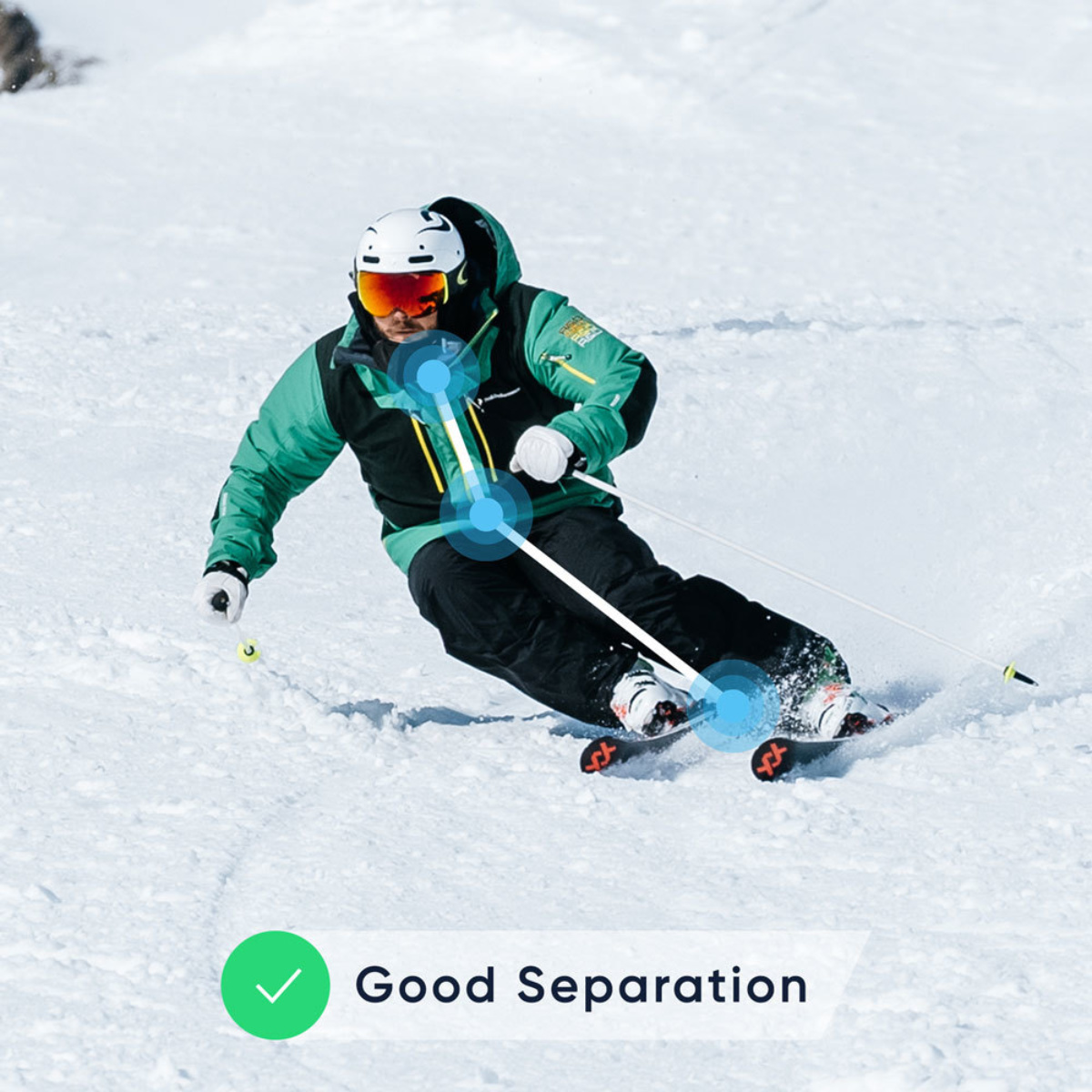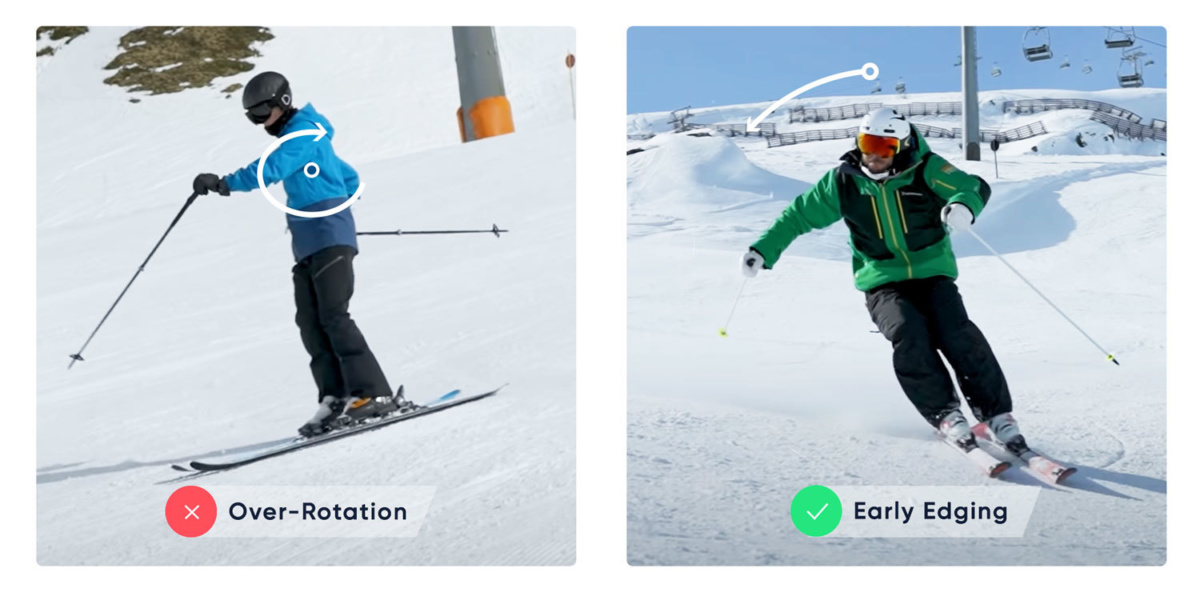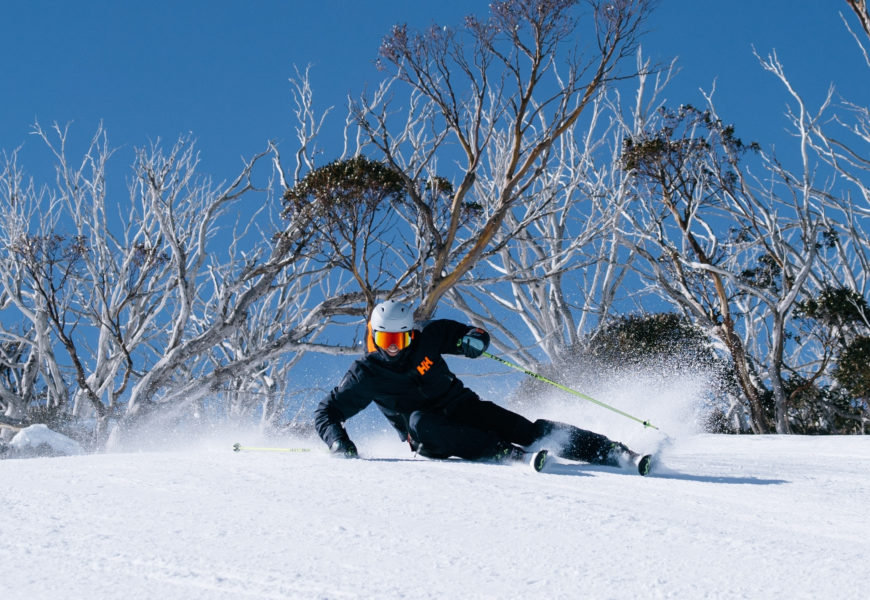How To Improve Your Short Turns

Votes:
Short turns are one of the most challenging - but rewarding - turn types in skiing. Shifting your balance from outside ski to outside ski in quick succession as you roll onto each edge sure takes skill, but man - does it feel good!
We headed out onto the mountain with Jacob, an intermediate skier, to give him my three top tips for improving his short turns. Watch the video below to see Jacob’s short turns transformation, and see how you can take your short turns to the next level.
What makes a good short turn?
Tip 1: Walk the turn
With this tip, we’re looking for a separation between the upper body and the lower body. Remove your skis and look for a gentle slope.
A key part of any advanced carving turn is being able to move your legs independently from your upper body. Body separation gives you more outside ski pressure, so more steering is happening and you’ll have better speed control. This is especially important in short turns, where you have to make balance adjustments very quickly.

Try walking the turn to get used to body separation
To improve your body separation, try walking the turn. With your arms outstretched to each side, make small steps in an S-shaped series of turns down the slope. As you start a new turn, drop the outside hand so your hip moves towards the hill and your upper body moves away from the hill. With your weight over the outside foot, you should be able to lift up the inside leg and remain balanced.
If you can feel a crunch at the hip when you try this exercise, you’re doing it right! When you go back to the short turns, try to replicate this crunch feeling. You might not get it straight away - as with all drills, repetition is key to success!

Separation between the upper body and lower body gives you more outside ski pressure
Tip 2: Zig Zag Turns
Practising short turns is all about moving fast from turn to turn. But there’s a difference between finding early edge engagement and rushing into the turn by over-rotating your upper body.

Try to avoid over-rotating your upper-body at the initiation of the turn
To avoid rotating your upper body to start the turn, here’s the second tip:
Start sliding forwards across the hill. After a few meters, change to sliding backwards across the hill. Then start to move onto the leg that will become the outside leg, and with this movement, the ski will turn effortlessly into the fall line and finish the turn.
Tip 3: Inside Knee
The third tip is all about finding more grip in our short turns, and we’ll focus on the ankle and knee joints.
A common mistake made by many skiers is that they push just the hip towards the hill to get onto their edges, but they totally forget about ankle and knee joints. Focus on rolling from the feet, ankles and knees into the turn, rather than only from the hips. Imagine you’re pressing a button towards the hill with your inside knee, and the outside knee will follow.
This tip will help you to find more grip and higher edge angles. Try to ease into this one - start with longer turns, and gradually make them shorter.

Aim to press the inside knee into the hill to find more grip
How will these tips help my skiing?
What does this all look like for the skier, and if you make these changes too, what difference will you notice in your skiing?
By working on his separation, turn initiation, and the ability to find grip in his turns, Jacob saw his Ski:IQ™ score improve from 121 to 133. Taking a closer look at his Carv data, Jacob's balance scores improved significantly, from 56 (in the 'Good' range) to 87 (in the 'Great' range).



